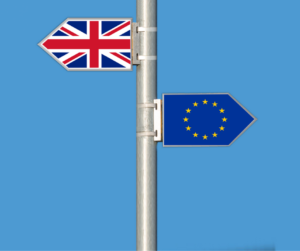
By Elionas2 from Pixabay
While the United Kingdom formally withdrew from the European Union early last year, the Brexit transition period officially ended on December 31, 2020. During the transition period, European Trade Mark Registrations (EUTMs) still extended to the UK and provided EUTM owners protection in the country. Although as of January 1, 2021 EUTMs are no longer protected in the UK, the UK Intellectual Property Office (UK IPO) has created “comparable trade marks” for all registered EUTMs. These comparable trade marks have the same legal status as if they were originally applied for and registered in the UK. Owners of registered EUTMs did not need to request that any such comparable rights were created – this process was automatic. Moving forward, the below points may be helpful in navigating trademark protection in the UK:
- Pending EUTM applications – Any EUTM applications still pending on January 1, 2021 will need to be re-filed as new UK trade mark applications. Applicants may file new UK applications by September 30, 2021 to maintain the filing date and priority date of their EUTM applications. The UK trade mark must be identical and cover the same goods and services as the EUTM. UK trade mark application filing fees will apply, and the UK application will be subject to the same review process as any other UK trade mark application.
- Because filing dates are important outside of the US, applicants with pending EUTM applications should aim to file within the 9 -month period after January 1, 2021 to ensure they are able to claim the same filing/priority dates in the UK as their EUTM applications. This process will not be automatic and requires action by applicants/counsel.
- Address for Service in the UK – Those wishing to apply to register a trade mark in the UK should note that an address for service in the UK is required for new applications. Under the UK IPO’s new rule, owners of UK comparable trade marks will not need to change their address for service for 3 years if their new comparable trade marks were created from registered EUTMs. After January 1, 2024, comparable trade mark owners will need to change their address for service to the UK only if their right is subject to proceedings (if your right is challenged and your address for service is outside the UK, the UK IPO will ask you to provide an address in the UK to engage in those proceedings). Interestingly, this 3-year exception for comparable trademarks does not apply to comparable trade marks created from international registrations designating the EU under the Madrid Protocol.
- This rule will limit businesses/individuals from filing UK trade mark applications themselves if they do not have a UK address. Owners of comparable UK trade marks may want to look into whether their existing EU counsel has an office in the UK. Otherwise, such owners will need to appoint a new representative in the UK by January 1, 2024. If your comparable UK trade mark was created from an EU designation under a Madrid Protocol application, the 3-year exemption period does not apply and you may need to appoint a representative with a UK address for service now.
- Use Requirements – For EUTMs, an owner may use a mark in any member state of the EU to demonstrate use across the EU. Because the UK is no longer part of the EU, those applying for a UK trade mark will need use the mark in the UK in order to demonstrate use and may not rely on use in the EU. For those with existing EUTM registrations that created comparable UK trade marks, the UK IPO will consider previous use in the EU. However, owners of new UK comparable trade marks should note that marks become vulnerable to cancellation proceedings in the UK on the grounds of non-use after five years. Thus, owners should put their marks to use in the next few years in the UK (if not already in use) if they wish to maintain their UK trade mark registrations and to avoid becoming vulnerable to cancellation proceedings.
For other questions, Gavin Law Offices is glad to advise on EU and UK trademark matters.
– Courtney Reigel, Esq.
